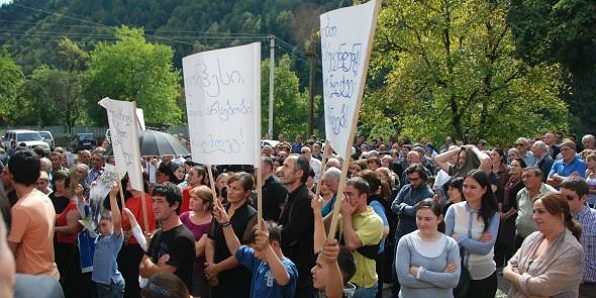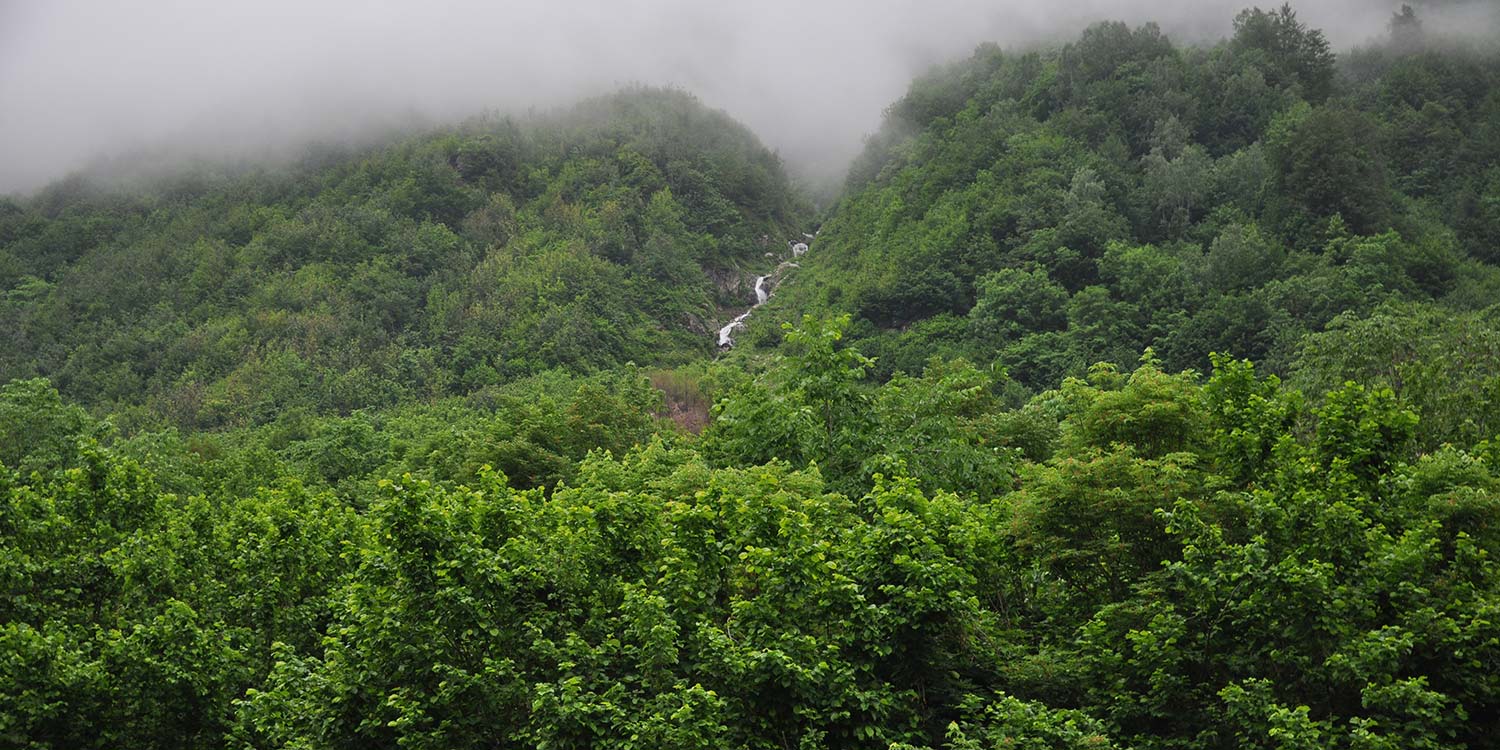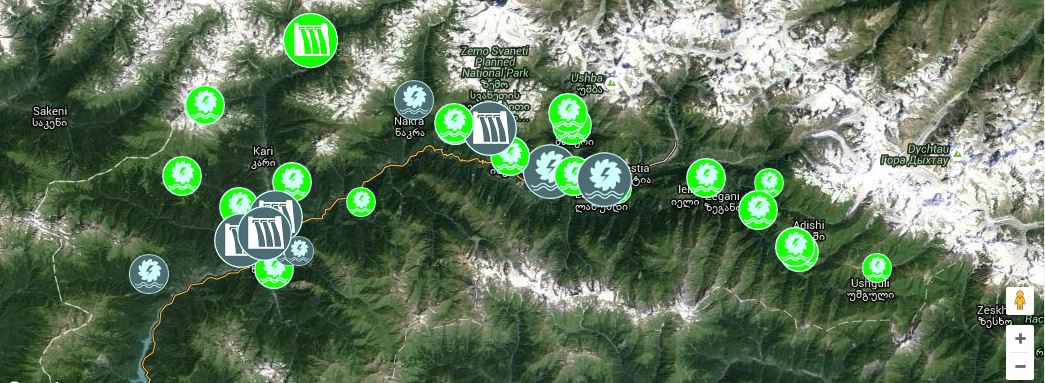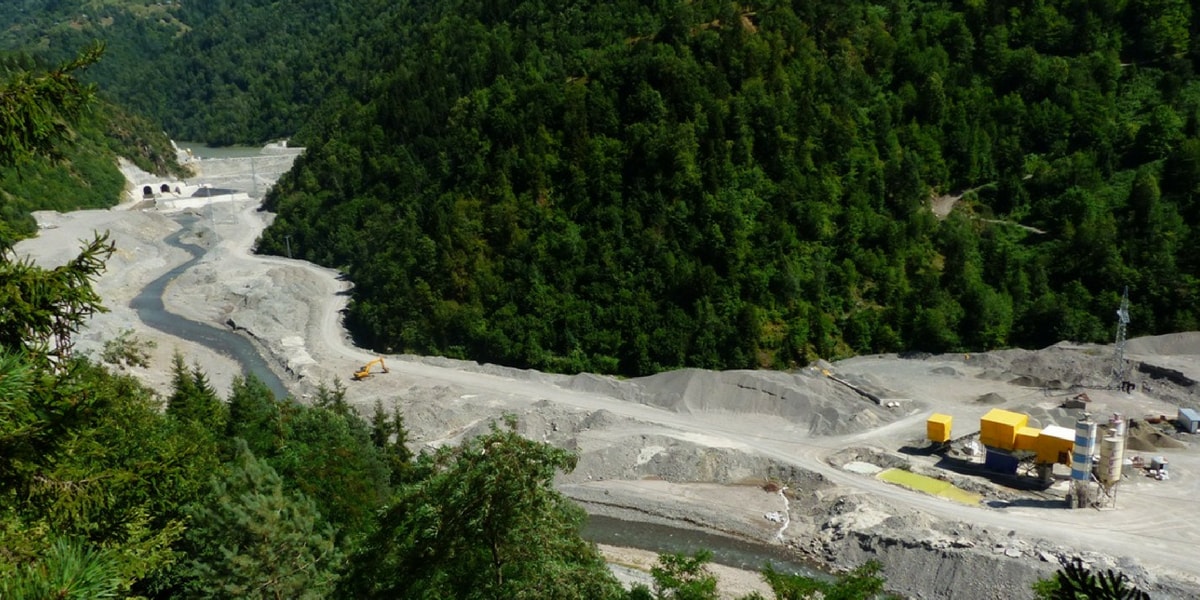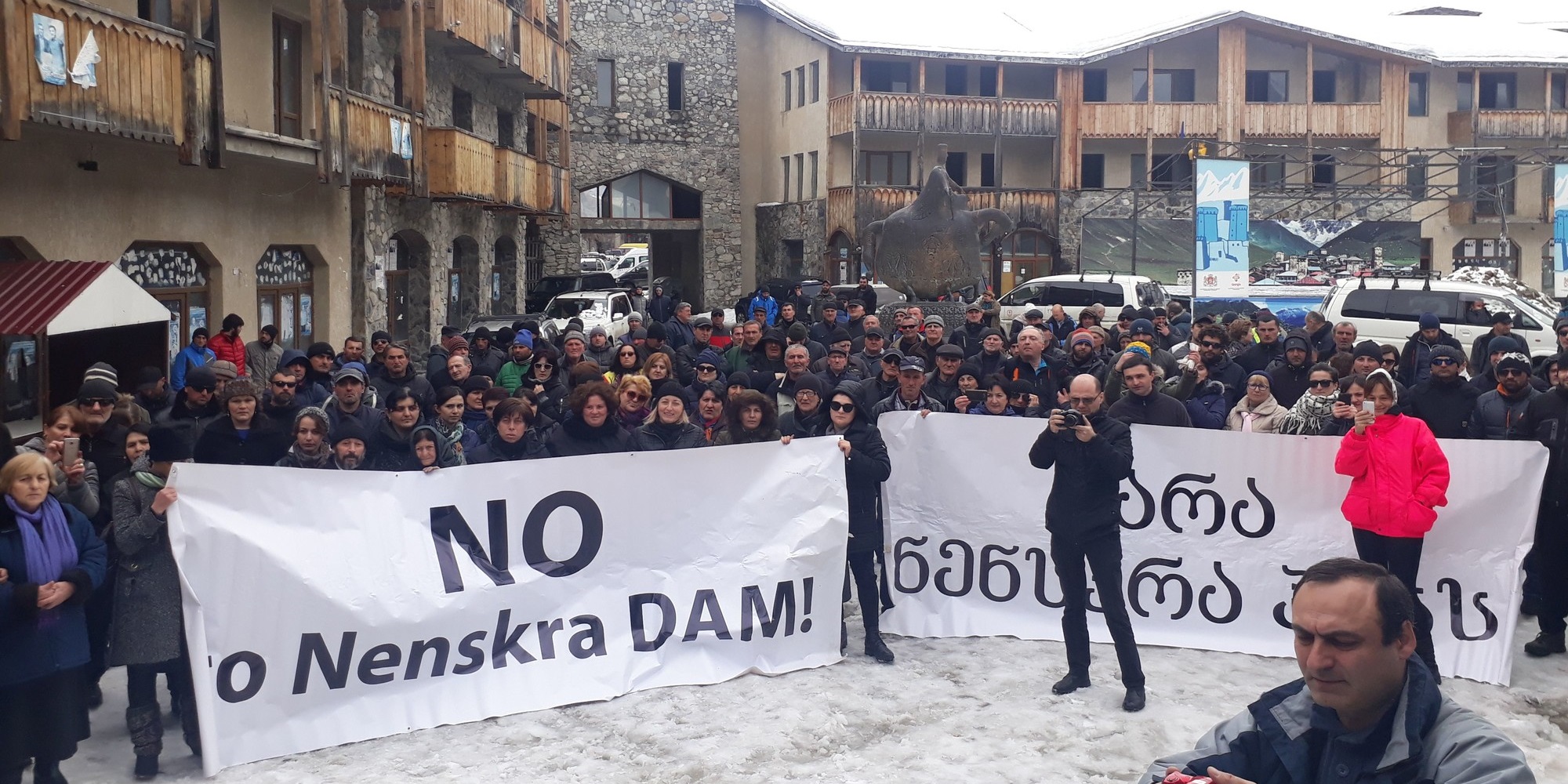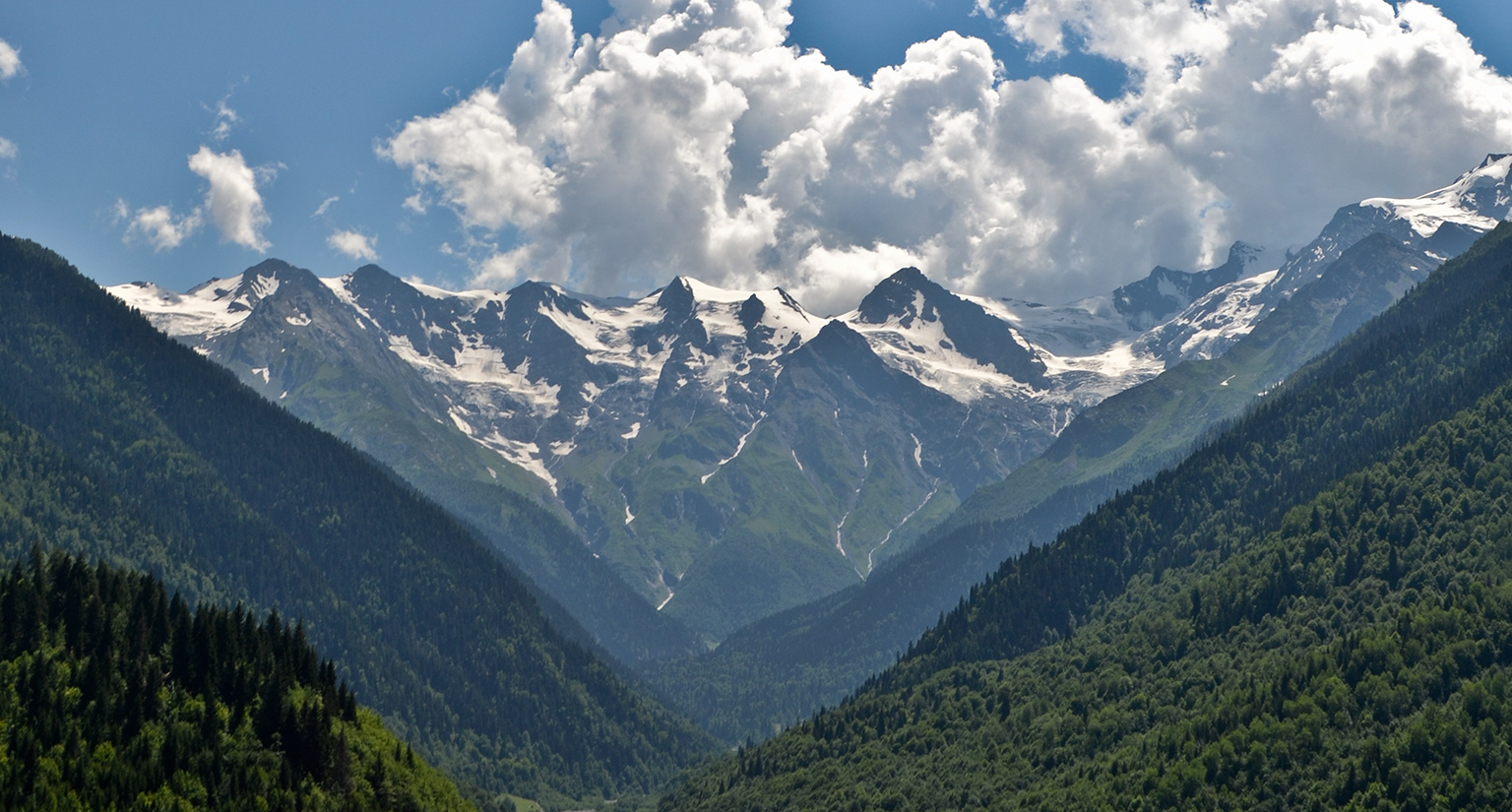Hydropower development in Georgia
Georgia plans to build a huge number of dams. Yet with 85 percent of electricity needs satisfied and exports not being taxed, these plans will rather benefit private investors than offering sustainable development for Georgia.
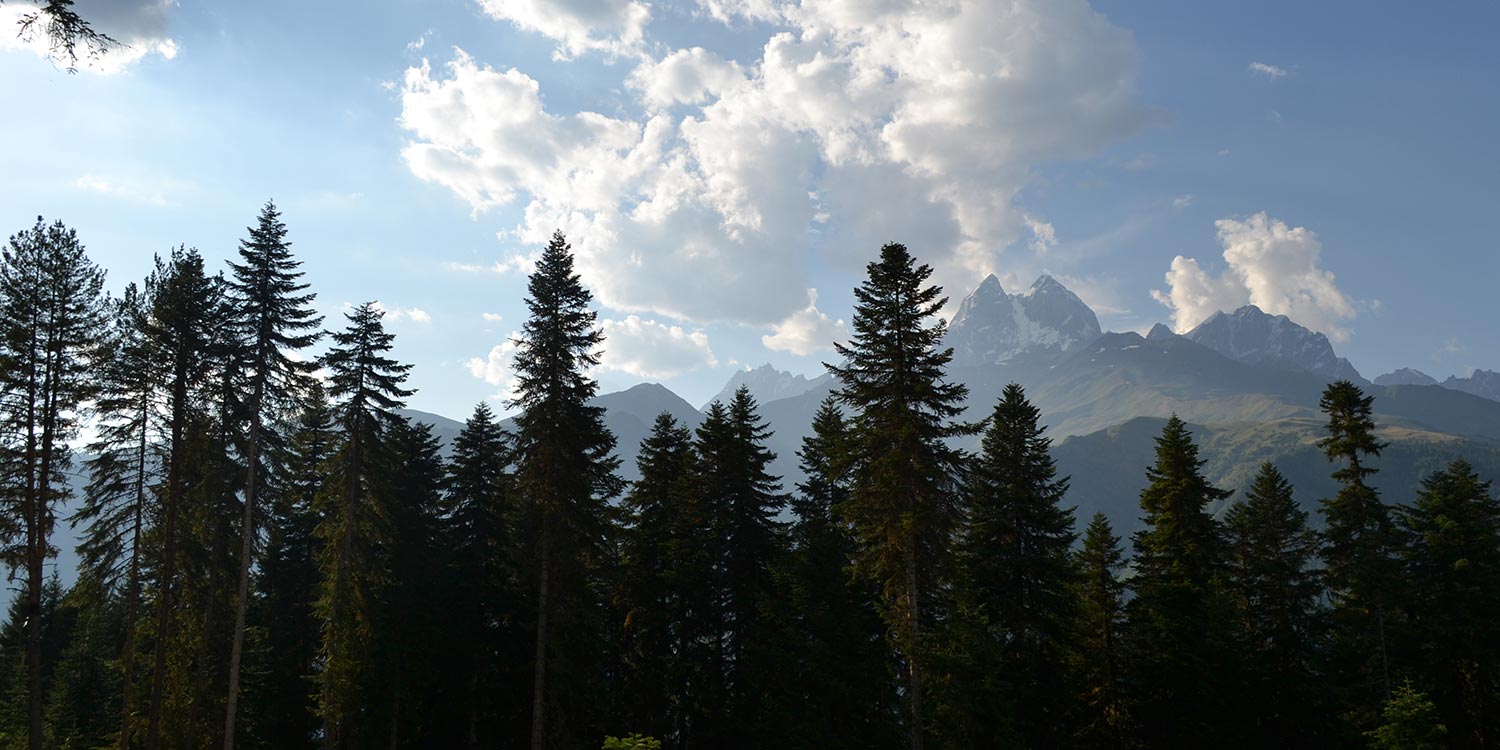
Stay informed
We closely follow international public finance and bring critical updates from the ground.
Key issues
- large dams will have adverse impacts on local communities’ livelihoods – more >>
- a cascade of projects will reshape the pristine mountain area of Upper Svaneti – more >>
- land- and mud slides have already resulted in casualties, yet geological risks are not properly assessed – more >>
- legal framework in Georgia offers limited protection for people affected by expropriation and resettlement – more >>
Background
Blessed with staggering mountains, Georgia has a largely unexploited hydropower potential on which private investors, the Georgian government and international lenders have set their sight.
Experience and ongoing monitoring shows that while some hydropower projects would only bring marginal, if any, benefits for locals, the risks associated with them are largely being underestimated or ignored.
Large dams versus local communities
Khudoni
By far the most controversial hydropower project in Georgia is the Khudoni dam. It will interfere with a rich cultural heritage and 2000 people will have to be forcefully resettled.
At the same time the opaque ownership of the project company (registered in a tax haven) and its contractual obligations make the purported benefits of the 702 MW project doubtful.
Nenskra
Not far from the site for Khudoni, another controversial large dam project, the 280 MW Nenskra hydropower plant, is being planned. It is the most advanced of Georgia’s massive plans for hydropower installations in the Upper Svaneti region.
It will deprive the local community of ethnic Svans of lands and livelihoods, but potential negative impacts have not been properly assessed.
A historical view on the Georgian energy sector, the effects on local communities and the role of international financial institutions.
Geological hazards in mountain areas
Also smaller projects like the Dariali (pdf) and the Shuakhevi (pdf) HPPs can pose substantial risks, even when no dams have to be built.
Apart from damaging the rivers’ biodiversity, the projects are being constructed without proper assessment of the geological conditions. Two fatal landslides in the Dariali Gorge revealed the irresponsible decision-making by the investors and the Georgian government.
Read more
Second fatal landslide in Georgian Dariali valley
Blog post | August 22, 2014
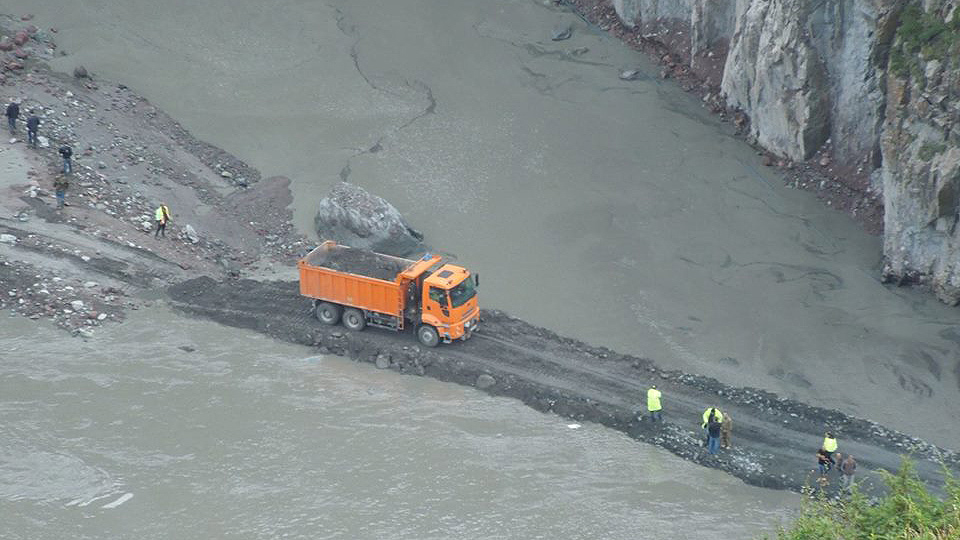
Landslides happened at the site of the Dariali hydropower construction. (Original image by Iago Kazalikashvili.)
Al Jazeera visited Georgia’s hydropower projects to report on constructions in seismically active areas.
Resettlement and lack of legal protection
Georgian communities that face hydropower projects have difficulties protecting their rights as affected stakeholders and landowners.
- Georgia’s legislation does not address the issue of involuntary resettlement caused by infrastructure projects.
- The Environmental Impact Assessment (EIA) system is ineffective in Georgia, both in terms of providing the public with information and opportunities for public participation (pdf).
- An unclear legal rights regime offers no or minimal protection for communities that make customary use of land that traditionally was in their hands. Unregistered land plots can literally be grabbed by investors for infrastructure projects.
In addition to the threat of losing their land or being resettled, farmers may have to face reduced access to water for irrigation or higher risk of flooding due to dam constructions. Both exposes them to an increased food insecurity.
Related projects
Shuakhevi hydropower plant, Georgia
Georgia’s biggest and one of the most controversial hydropower plants is mostly famous for its failures. Two months after becoming operational in 2017 its tunnels collapsed. And after two years of repairs water is leaking from the dam. Shuakhevi hydropower plant (HPP) once promised to bring energy independence to Georgia. Instead it managed to collect an impressive ‘portfolio’ of problems in a wide range of areas: from biodiversity, to gender impacts, to community relations.
Nenskra hydropower plant, Georgia
The Nenskra dam is the largest of Georgia’s massive plans for hydropower installations in the Upper Svaneti region. If realized, it will deprive the local indigenous communities of their ancestral lands and traditional livelihoods, and cause an irreversible damage to the fragile river and mountain ecosystems.
Khudoni hydropower plant, Georgia
While a mountain community will have to be forced to resettle for this mega-project, the opaque ownership and weak taxation mean that benefits for Georgia are highly doubtful.
Latest news
Albania’s Skavica dam can’t get off the ground – time to finally cancel it!
Blog entry | 24 November, 2025The highly damaging hydropower project could hardly have had stronger political support at its inception, with the country’s parliament passing a special law in 2021 to appoint U.S. construction giant Bechtel as the main contractor. But four years later, the project has stagnated, with no environmental permit and no financing.
Read moreRomania’s Parliament paves the way for environmental destruction and ‘foreign agent’ repression
Blog entry | 20 October, 2025Romania stands at a dangerous crossroads. Last week, a law initiated by the senator Daniel Zamfir in 2022 and already then rejected by the Senate, passed by a crushing majority (262–33) in the decisive Deputies Chamber.
Read moreExpanding the Emerald Network: Progress and gaps in the Western Balkans
Blog entry | 9 October, 2025At the 15th meeting of the Bern Convention’s Group of Experts on Protected Areas and Ecological Networks – held from 7 to 8 October 2025 in Bar, Montenegro – participants reviewed progress towards establishing the Emerald Network of protected areas. As part of the programme, the group visited Lake Skadar, one of Montenegro’s key Emerald sites, acknowledging the government’s efforts to safeguard this unique ecosystem.
Read moreRelated publications
Open letter: Civil society asks EBRD to withdraw from Ombla hydropower plant project
Advocacy letter | 13 May, 2013 | Download PDFA new nature impact assessment of the proposed Ombla hydropower plant showed that the project could harm many of the 68 identified cave species, including the endemic ones. Based on these findings, civil society groups are calling on the EBRD to pull out from the project for which it has approved a EUR 123 million loan.
New EBRD Environmental and Social policy needs climate muscle and tightened safeguards for protected areas
Bankwatch Mail | 10 May, 2013 |If there is one sector in which the EBRD has been causing particular controversy in recent years, it is the energy sector. From lignite in Slovenia to hydropower in Georgia and nuclear in Ukraine, the bank has financed a series of projects that have incurred opposition from various quarters. Now that the EBRD is revising its Environmental and Social Policy it’s time to take a look at what needs to be learned from these projects.
When in hole, stop digging: lessons from the Ombla hydro project in Croatia
Bankwatch Mail | 10 May, 2013 |At the time of writing, it is highly uncertain what the future holds for the controversial 68 MW Ombla underground hydropower plant. Approved for financing by the EBRD back in 2011, only recently has a nature impact assessment study finally been published, and no final opinions have been given by either state institutions or the EBRD on whether the project is to go ahead.
